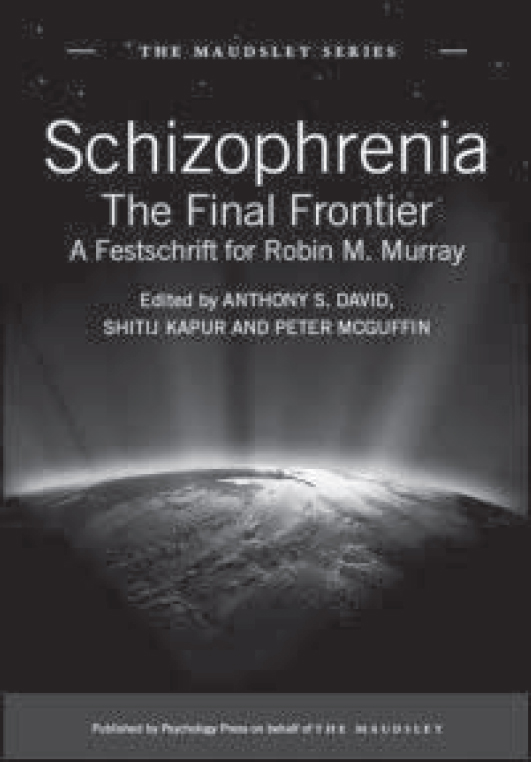
In the final two decades of the past century and the opening years of the current one, two giants have dominated schizophrenia research in the UK, and indeed have been major figures on the world stage. Their sometimes opposing stances at international conferences have been instructive about the nature of scientific endeavour while adding fire to the quest to understand this enigmatic illness. It has been the dynamic of the interaction between Isaiah Berlin's fox and hedgehog. Robin Murray, whose scientific life is celebrated in this book, is the fox who knows many things. Tim Crow, the hedgehog, knows one big thing. To do Tim justice, he has been willing to change his big idea as evidence demands - from the contagion theory in the 1980s to a specific genetic theory he presents in this book. His chapter demonstrates remorseless logic, stripping bare all alternative theories. Perhaps we will only understand schizophrenia when we have established the cardinal pathophysiology at the core of Kraepelin's concept, but I doubt that the core will prove to be a unique cause. In the matter of causality, the evidence that many factors contribute is incontrovertible. Robin Murray has played a large part in delineating many of these: the list includes genes, intrauterine environment, social stigmatisation, and cannabis use.
This book illustrates the intellectual and personal attributes that have made Murray such a successful fox. The many chapters provide a concise account of the bewildering body of current knowledge about the causes and pathophysiology of schizophrenia. It is striking that many of these chapters are written by experts who have worked in Murray's department. A comment that Murray himself makes in relation to the paper on the developmental hypothesis of schizophrenia, proposed by himself and Shôn Lewis in 1987, is revealing. At the time, this article, along with the paper published in the same year by Daniel Weinberger, crystallised a revolutionary idea that was germinating amidst a mass of new evidence from neuroimaging and epidemiology, but required clear articulation: that the origins of schizophrenia lie in disordered early neurodevelopment. A glib historian might designate that paper as Murray's major contribution. Murray himself points out modestly that the idea was proposed by his junior co-author and adds that he considers that neurodevelopmental disorder is just one of several routes to schizophrenia. Perhaps this anecdote reveals something of his leadership style and helps explain the prodigious output of ideas and of creative researchers emerging from his team.
Schizophrenia is proving a more complex challenge than most of us anticipated at the dawn of an era that is providing us with the tools and concepts necessary to marry neuroscience to psychosocial science. It is not easy to identify with confidence an answer that might satisfy a hedgehog. We still have much to learn if we are to manage schizophrenia well or prevent it. The field still needs foxes to unearth and unravel the diverse strands, and this book is very much one for such individuals.



eLetters
No eLetters have been published for this article.